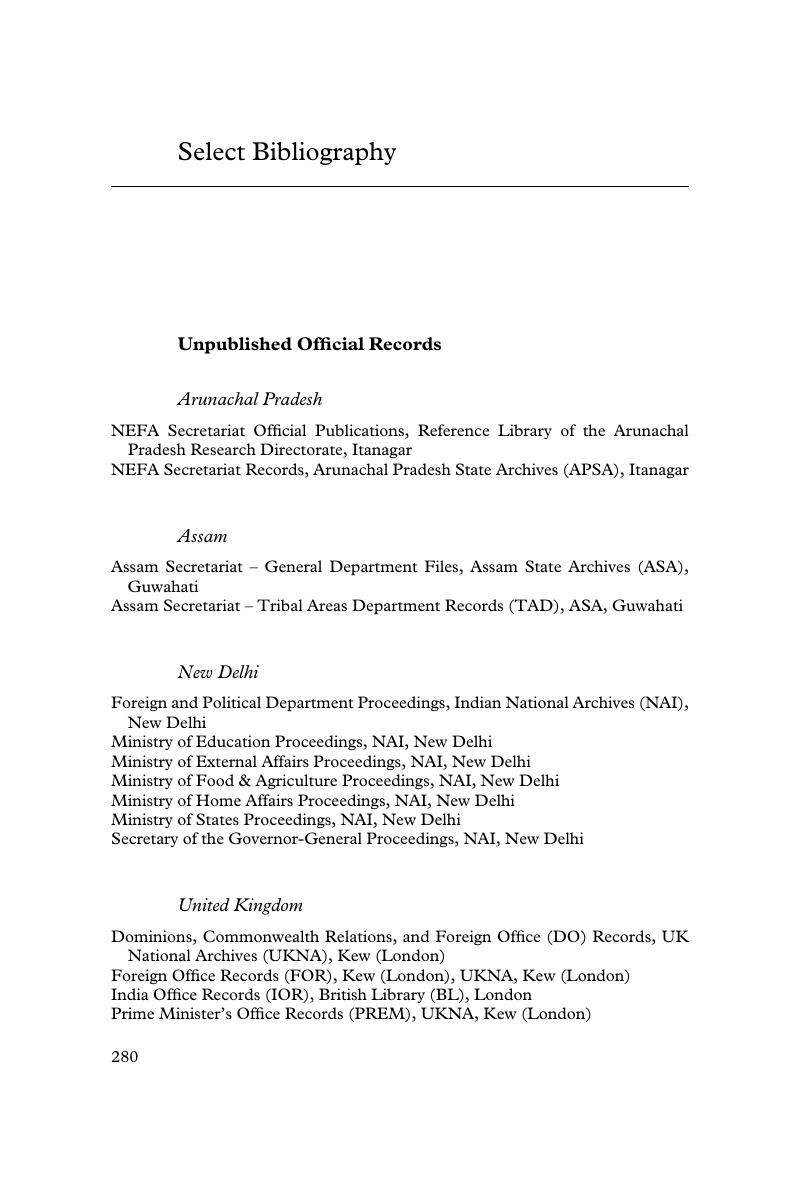Select Bibliography
Published online by Cambridge University Press: 17 November 2016
Summary

- Type
- Chapter
- Information
- Shadow StatesIndia, China and the Himalayas, 1910–1962, pp. 280 - 309Publisher: Cambridge University PressPrint publication year: 2016



